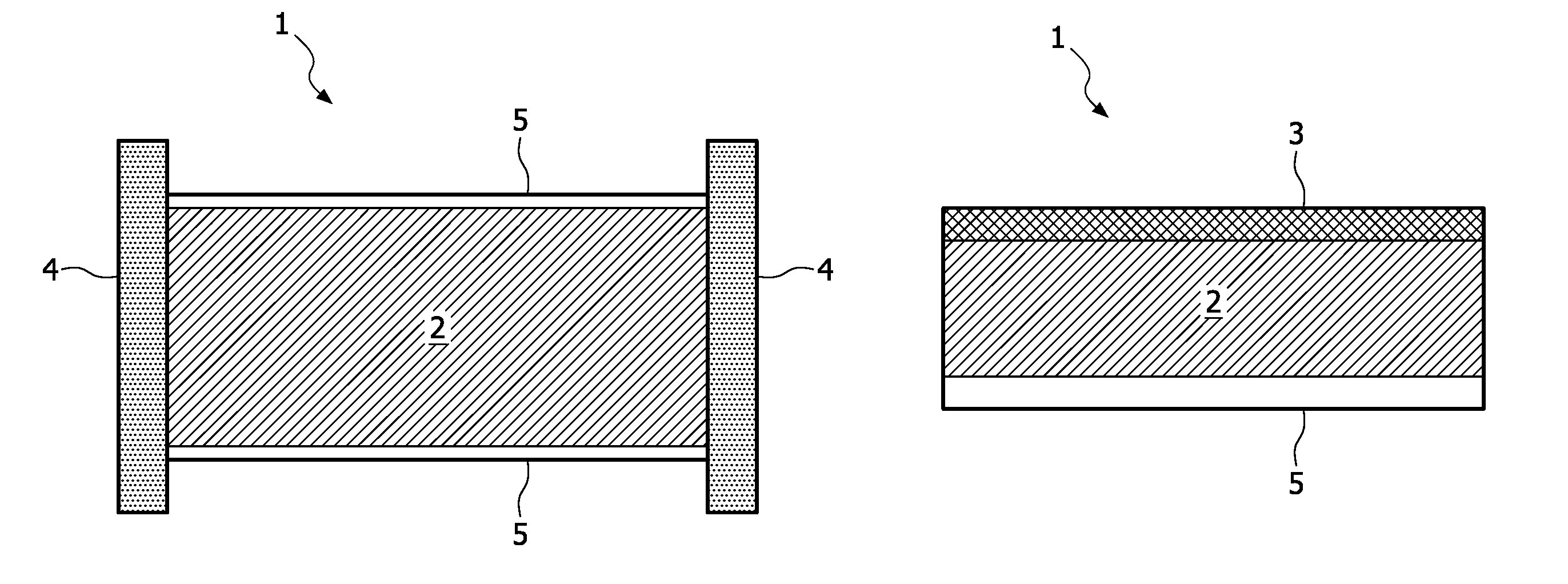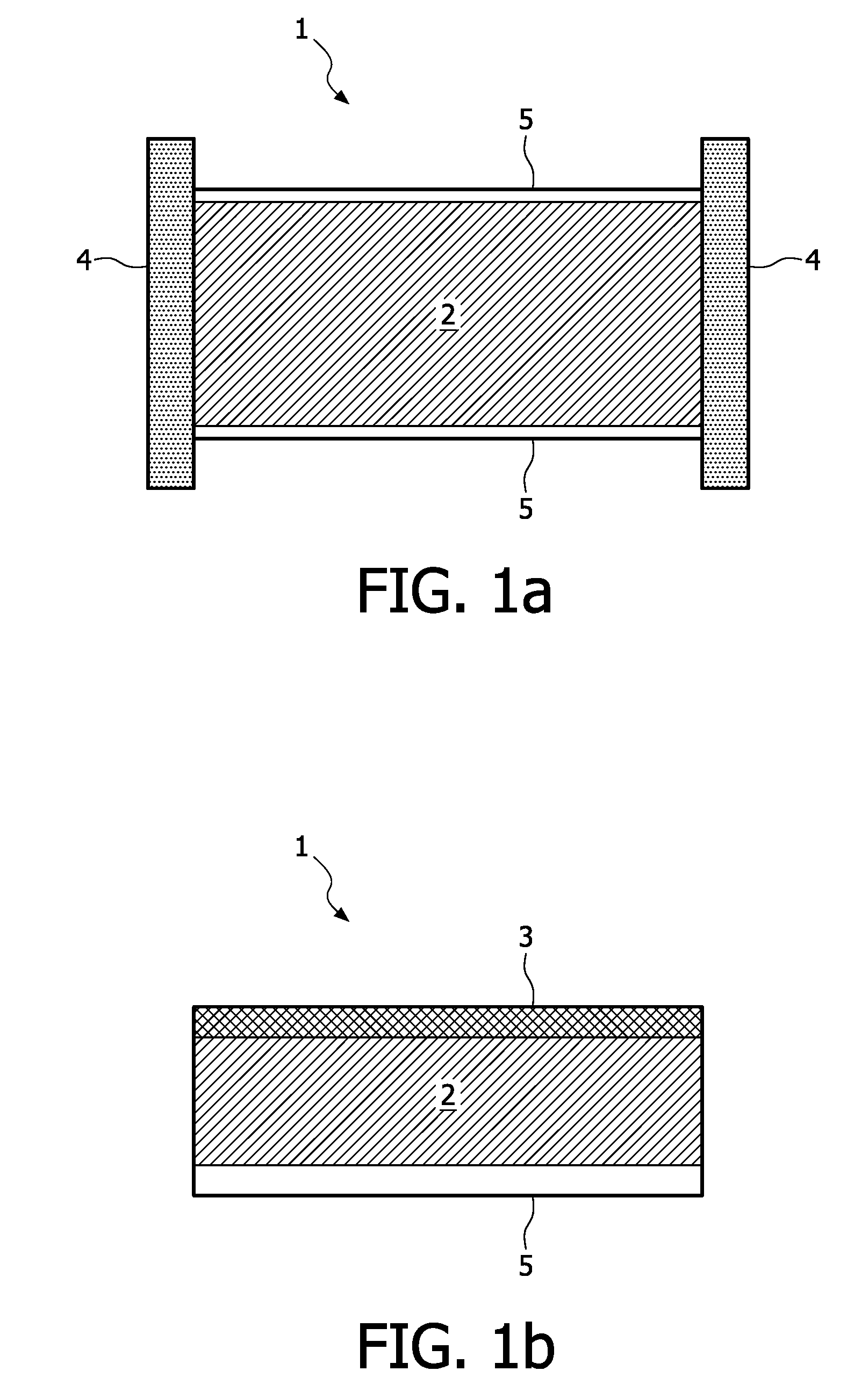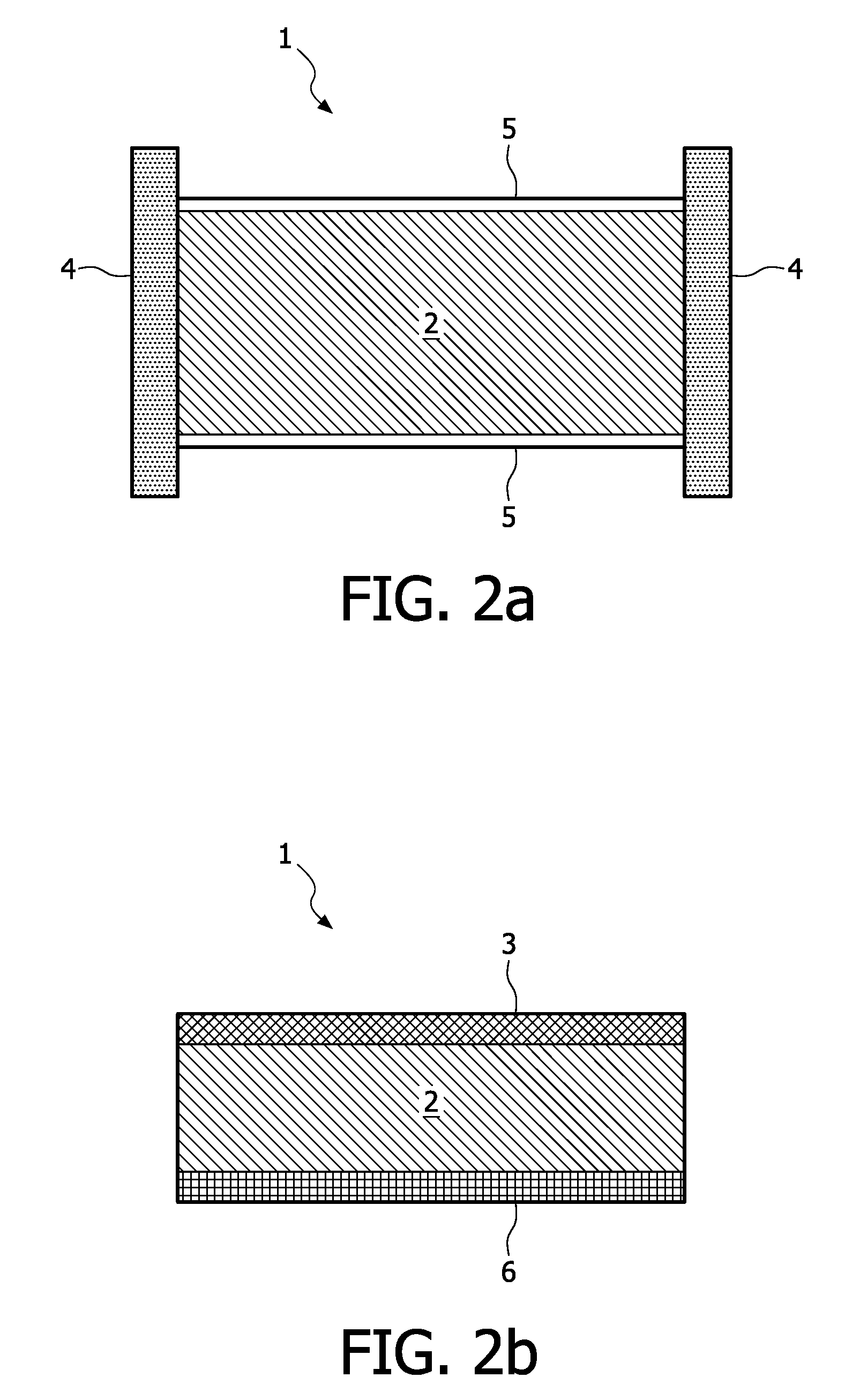Luminescent photovoltaic generator and a waveguide for use in a photovoltaic generator
a photovoltaic generator and waveguide technology, applied in the direction of luminescent compositions, semiconductor devices, chemistry apparatus and processes, etc., can solve the problems of traditional panels nevertheless having their disadvantages, traditional panels not particularly well generating electricity, and luminescent photovoltaic generators
- Summary
- Abstract
- Description
- Claims
- Application Information
AI Technical Summary
Benefits of technology
Problems solved by technology
Method used
Image
Examples
Embodiment Construction
[0029]The present invention provides a waveguide for use in a photovoltaic generator, and a photovoltaic generator as described above.
Materials for Use in the Waveguide and Photovoltaic Cell
[0030]As described herein, the transparent matrix has (i) particles comprising an inorganic luminescent material dispersed therein and / or (ii) an inorganic luminescent material disposed at at least one side thereof. If the transparent matrix has particles comprising an inorganic luminescent material dispersed therein and an inorganic luminescent material disposed at at least one side thereof, the inorganic luminescent material of the particles and the material disposed at at least one side of the transparent matrix may be the same or different materials, and may be as described herein. The particles may comprise, consist essentially of or consist of the inorganic luminescent material. If the particles consists essentially of the inorganic luminescent material, preferably less than 5 wt %, more pr...
PUM
| Property | Measurement | Unit |
|---|---|---|
| width | aaaaa | aaaaa |
| width | aaaaa | aaaaa |
| wavelength | aaaaa | aaaaa |
Abstract
Description
Claims
Application Information
 Login to View More
Login to View More - R&D
- Intellectual Property
- Life Sciences
- Materials
- Tech Scout
- Unparalleled Data Quality
- Higher Quality Content
- 60% Fewer Hallucinations
Browse by: Latest US Patents, China's latest patents, Technical Efficacy Thesaurus, Application Domain, Technology Topic, Popular Technical Reports.
© 2025 PatSnap. All rights reserved.Legal|Privacy policy|Modern Slavery Act Transparency Statement|Sitemap|About US| Contact US: help@patsnap.com



